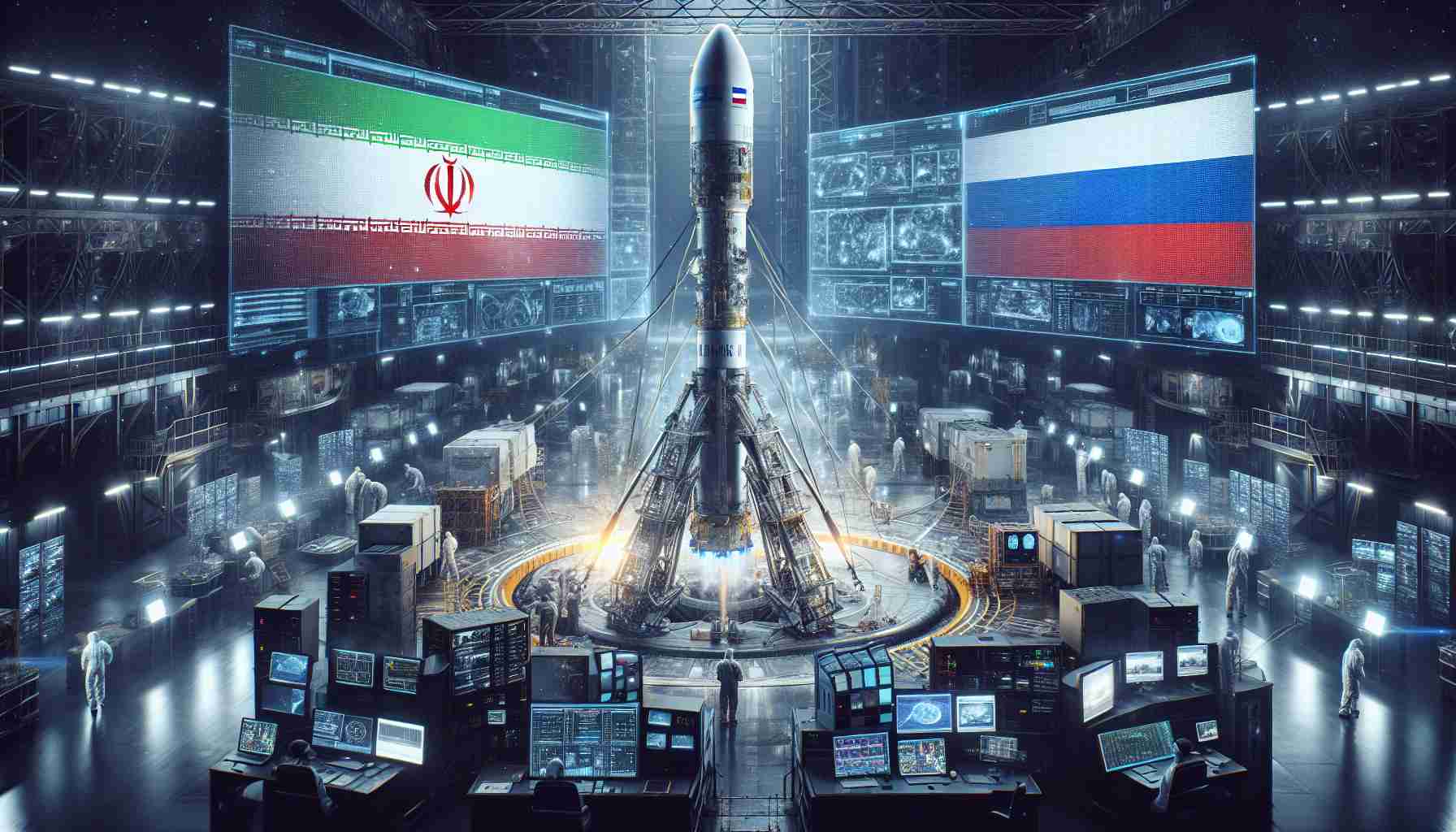
Iran has made significant strides in its space program by dispatching two domestically produced satellites to Russia. This development, reported by the semi-official agency Tasnim, highlights the ongoing partnership between Iran and Russia, both of which face U.S. sanctions. The satellites, named Kowsar and Hodhod, are part of Iran’s efforts to enhance its capabilities in space technology.
Kowsar is a high-resolution imaging satellite, while Hodhod serves as a small communications satellite. This marks a pivotal moment for Iran’s burgeoning private space sector. The Kowsar satellite is expected to support various applications, including agriculture, resource management, and environmental monitoring. Meanwhile, Hodhod is tailored for satellite communications, particularly benefiting remote regions with limited infrastructure.
Past collaborations between the two nations included successful satellite launches in earlier years, raising concerns in the U.S. Officials fear the technology could bolster military surveillance and operations, particularly in conflict-prone areas like Ukraine and West Asia.
Just last month, Iran classified this initiative as a landmark advancement in its space capabilities. This continuous cooperation with Russia not only strengthens their ties but also signals Iran’s growing ambitions on the global technological stage. Furthermore, this latest effort showcases the resilience of Iran’s space program amidst international pressures.
Iran and Russia Collaborate on Satellite Deployment: A New Frontier in Space Technology
Iran has embarked on a notable journey within the realm of space technology by dispatching two satellites, Kowsar and Hodhod, to Russia for deployment. This initiative underscores a deepening collaboration between Iran and Russia, both of which are navigating through severe U.S. sanctions that have propelled their partnership beyond mere interest to strategic collaboration.
Key Questions and Answers
1. What is the purpose of the Kowsar and Hodhod satellites?
– Kowsar is designed for high-resolution imaging, aimed at applications such as agricultural monitoring, environmental assessment, and resource management, while Hodhod is a small communications satellite intended to enhance connectivity in remote and underserved areas.
2. What historical context surrounds Iran and Russia’s collaboration in space?
– The partnership dates back several years, with previous successful satellite launches and joint ventures that have raised international concern about the potential military applications of the technology being shared.
3. How might this collaboration affect geopolitical dynamics in the region?
– This partnership is likely to shift the balance of power in the region by giving both nations enhanced surveillance capabilities and the potential for more sophisticated military operations, particularly with the ongoing tensions in Ukraine and West Asia.
Key Challenges and Controversies
One of the primary challenges associated with this collaboration is the potential escalation of military capabilities, which has drawn scrutiny from Western nations, particularly the United States. Concerns have been raised regarding the dual-use nature of space technology, which can serve both civilian and military purposes. Additionally, Iran’s advancements in satellite technology could provoke responses from neighboring countries wary of its influence and capabilities.
Another challenge includes the reliability and stability of the Iranian space program amid various geopolitical pressures and domestic issues such as economic sanctions and political strife. The commitment of Iranian authorities to continue investing in their space endeavors despite these challenges remains crucial for their long-term goals.
Advantages and Disadvantages
Advantages:
– Enhanced Technological Capabilities: The development of satellites like Kowsar and Hodhod potentially boosts Iran’s monitoring and communication capabilities, benefitting various sectors including agriculture, disaster management, and telecommunications.
– Strengthened Bilateral Relations: Collaborating with Russia enables Iran to circumvent some of the limitations imposed by Western sanctions, fostering a strategic alliance that can have broader implications in both technological and military contexts.
Disadvantages:
– International Backlash: Such collaborations may lead to increased tension with Western powers, resulting in further sanctions or diplomatic isolation, complicating Iran’s efforts on the world stage.
– Technological Dependency: Relying on Russian technology and expertise might hinder Iran’s development of an independent space program, making it vulnerable to shifts in political dynamics between the two nations.
In summary, Iran’s collaboration with Russia for satellite deployment represents a significant step forward in its space endeavors but comes with inherent risks and challenges. As both nations navigate through a complex international system, their partnership highlights the intersection of technology, geopolitics, and national ambition.
For more information on this topic, you can visit Reuters for the latest updates on international relations and technological advancements.



